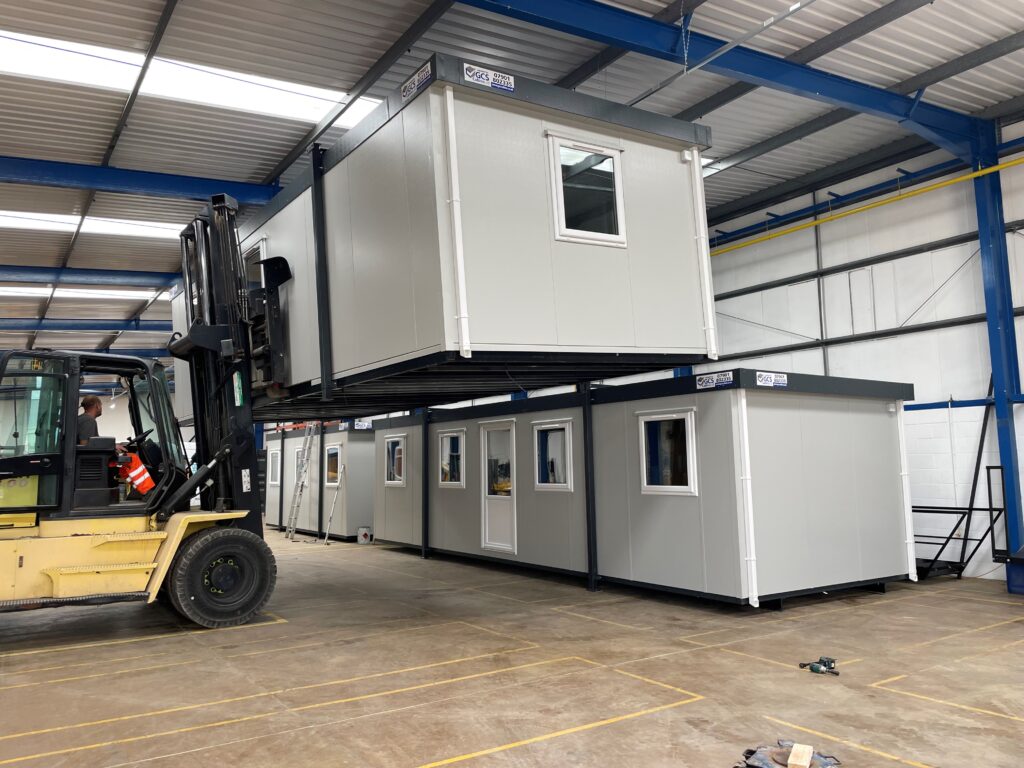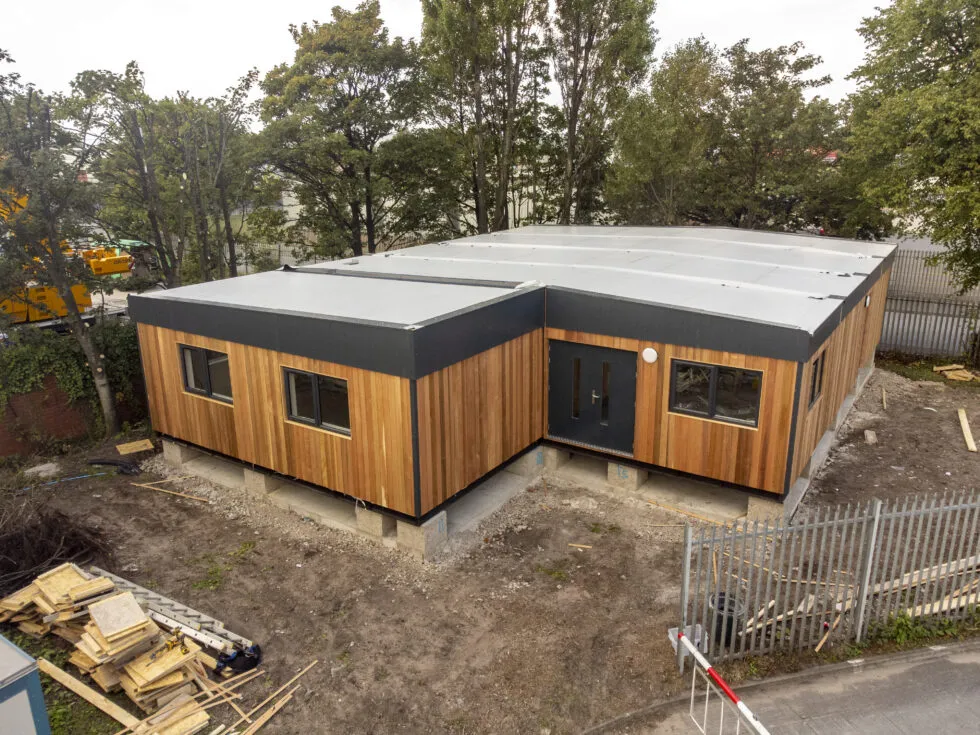Time and time again, construction proves to be a notoriously dangerous industry to work in. In 2022/23, construction ranked as the deadliest sector for fatal accidents. This rose by almost 20% in the last five years.
With a combination of risk factors, including height, noise, dust and machinery, there is a need for a more controlled work environment. That’s where modular construction comes in. With modular buildings, most of the work is completed in a factory setting. This results in fewer hazards and different set of safety standards.
So, what are the ways modular construction can help uphold health and safety standards?
How is modular construction different to traditional methods?
Modular construction is a building method in which different structural components, known as modules, are prefabricated in a factory and then transported to the construction site for assembly.
Another similar method involves buying or hiring a portable building. This is a stand-alone structure designed to be moveable. These buildings come with lighting, heating, and electricity and can be installed in as little as one day.
Traditional construction usually involves an extensive on-site building process. This often presents significant safety risks to workers, as hazards like heavy machinery, uneven ground, and the opportunity for high falls are present. In contrast, modular construction offers a safer alternative. Modular construction reduces the potential for on-site accidents and injuries by moving a significant portion of the work off-site.

Benefits of factory construction
One of the most significant advantages of modular construction is its ability to take place in a controlled factory environment.
The indoor setting negates any environmental hazards that are common on-site, lowering the risk of slips, trips and falls. It’s also easier to reduce the amount of debris in a factory and keep the working environment clean.
By creating modules in factories, teams can use equipment like warehouse ladders, dust extraction systems and stationary platforms. These tools are designed to provide stable and secure working conditions. This helps to minimise the threat of traditionally dangerous tasks.
Most falls in a modular construction factory will be from a single storey or less. In contrast, on the work site of a traditional building, they could be from several storeys up.
Reducing risks to the public and the environment
It’s not just the workers on-site who are at risk. Traditional construction can pose a similar danger to the general population. In 2022/23, 68 members of the public were involved in fatal work-related accidents.
Modular construction reduces risks to the public by decreasing the time large vehicles and heavy machinery are in public spaces. Off-site fabrication also causes fewer disruptions to the surrounding environment. For example, noise pollution, dirt, dust, and traffic congestion.
Furthermore, a 2023 report showed that around 700,000 pupils are learning in unsafe schools. This includes schools that need major rebuilding or refurbishment. Modular construction is becoming a common way of providing new classrooms to schools like these. For example, modular building company GCS Cabins has provided buildings for UK schools since 2007.
Planning
For large projects like barracks or hotels, the traditional job site can host upwards of 100 workers at a time. This type of construction demands meticulous planning. Sometimes, one job can’t start until the previous one is finished.
In contrast, factory construction allows many tasks to be completed independently. They are then assembled on-site by a fewer number of workers. This method cuts project lead times and reduces the staffing needed compared to on-site work. Additionally, it means there are fewer people on-site to supervise.
Overall, modular construction speeds up project completion, manages resources more efficiently, and keeps the workforce safer. It reduces the uncertainties of traditional construction methods. This leads to higher productivity, better quality control, and improved safety. An attractive option for large-scale projects.

Quality materials
After hearing about the speedy production timelines of modular buildings, you might ask: If they’re put together so quickly, are modular buildings made of quality materials? Are they safe?
Buildings and facilities created through modular construction are safe for several key reasons.
Modular buildings are built in controlled environments. This ensures consistent standards through a stringent quality control process. They also comply with the same building codes as any other structure in the UK.
Additionally, their design often includes extra reinforcements to withstand the transportation process. This built-in durability also applies once they are installed. Many modular and portable buildings also incorporate fire-resistant materials and designs to improve fire safety.
These factors collectively ensure that modular construction is a safe and reliable building option.
To sum it up
It’s safe to say modular construction is a promising alternative to traditional building sites. It reduces many of the risks associated with the on-site construction of an entire building.
This method offers workers safety, peace of mind, and better working conditions. It also mitigates risks to the public and prevents environmental disruptions.
Of course, injuries are inevitable when people are moving about. However, in a factory setting, reliable measures are in place to reduce the chance of these accidents becoming serious.
Creating safer building solutions with GCS Cabins
Since its formation in 2007, GCS Cabins has upheld the highest standards in health and safety. We promise to deliver cost-effective, efficient, durable, and, most importantly, safe buildings for a wide range of projects.
To learn more, contact us today and chat with our team about how we can help you achieve your unique goals.






